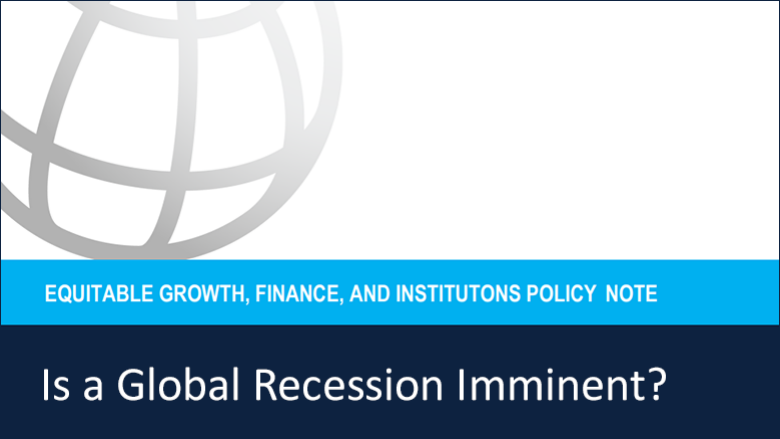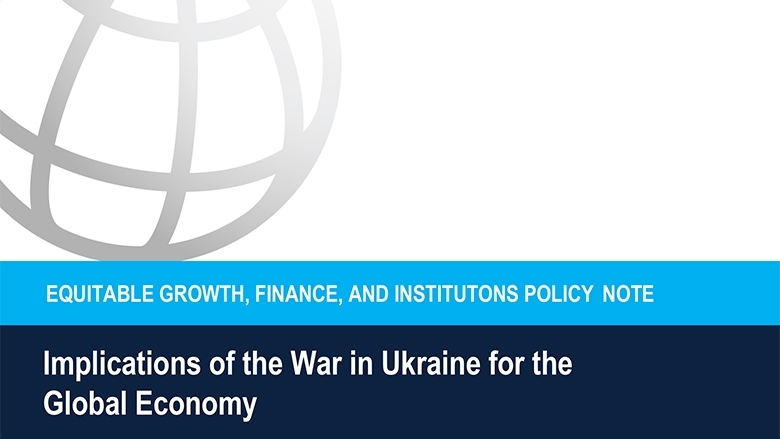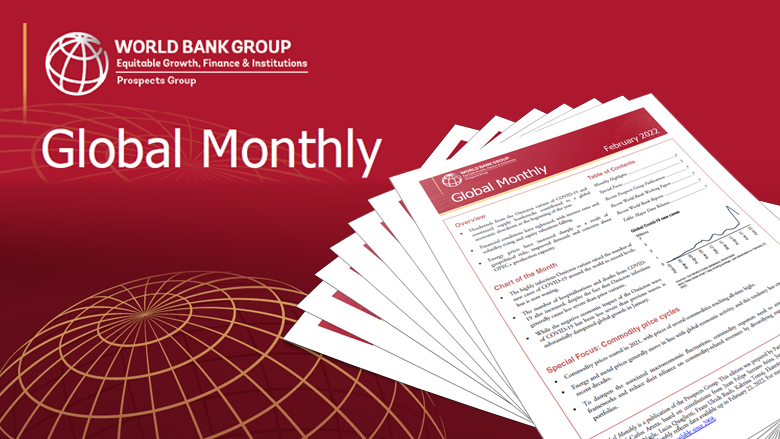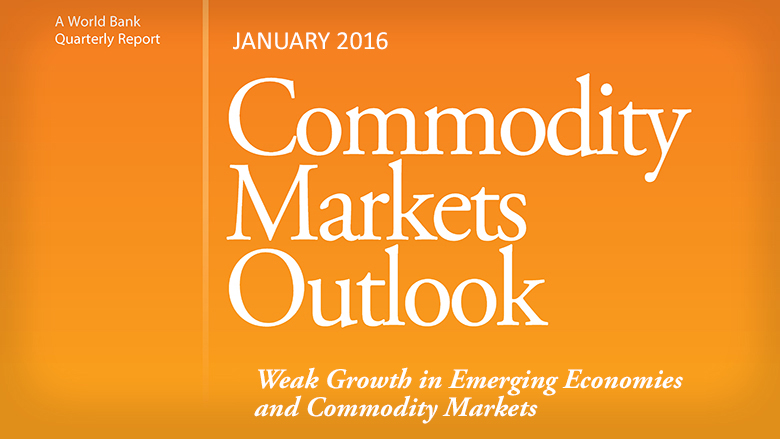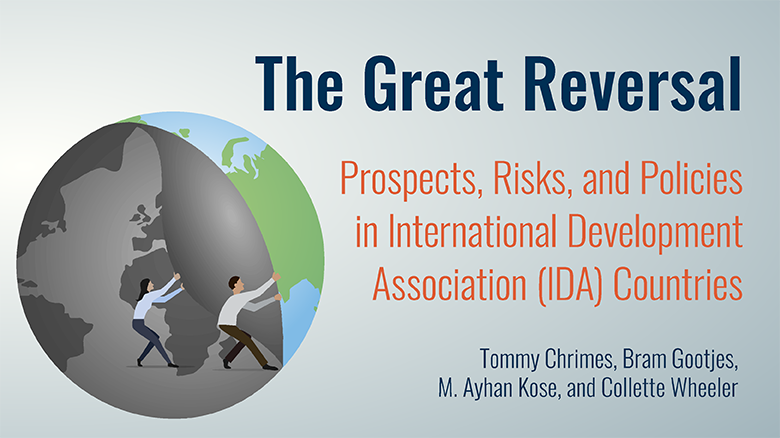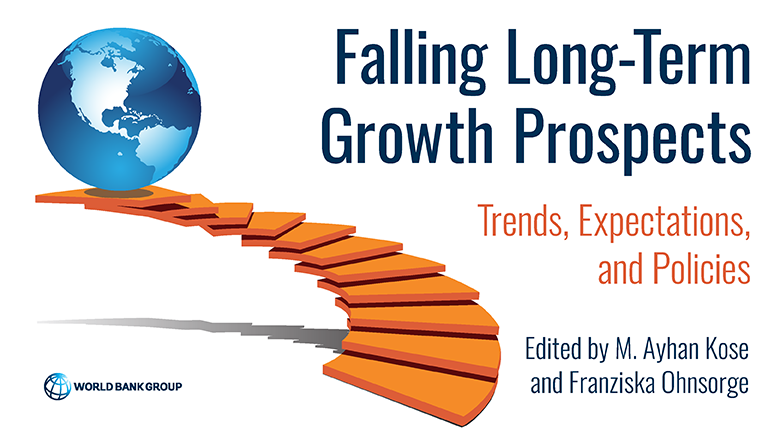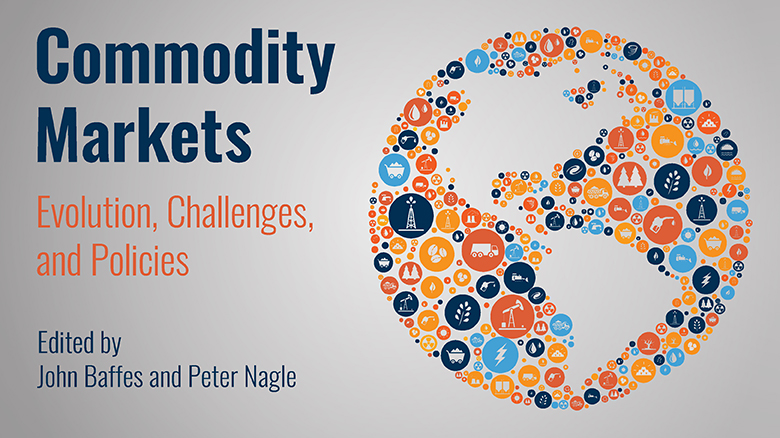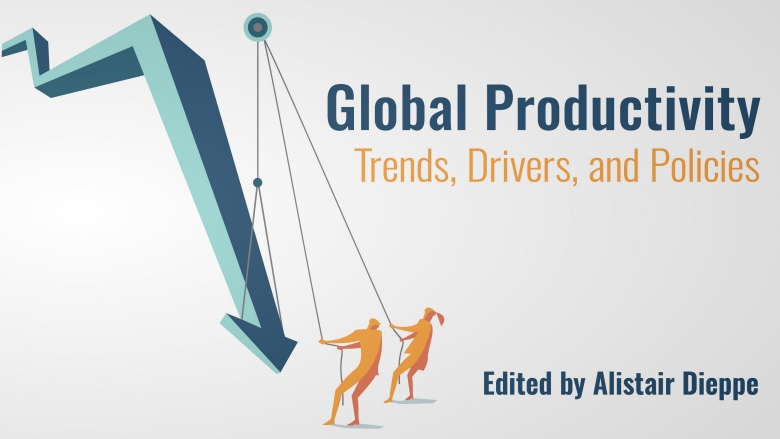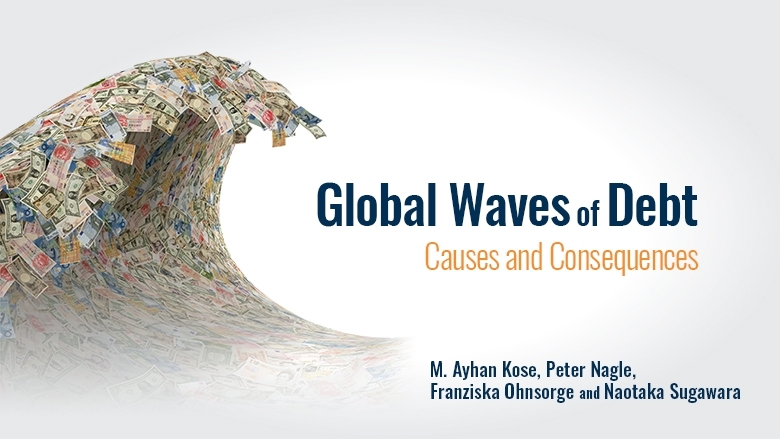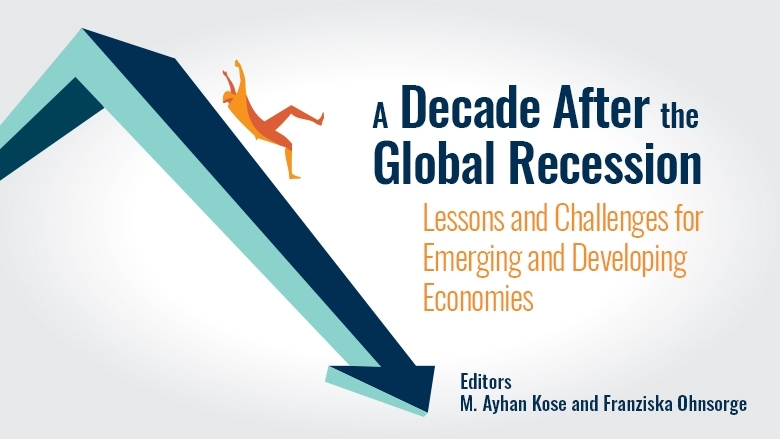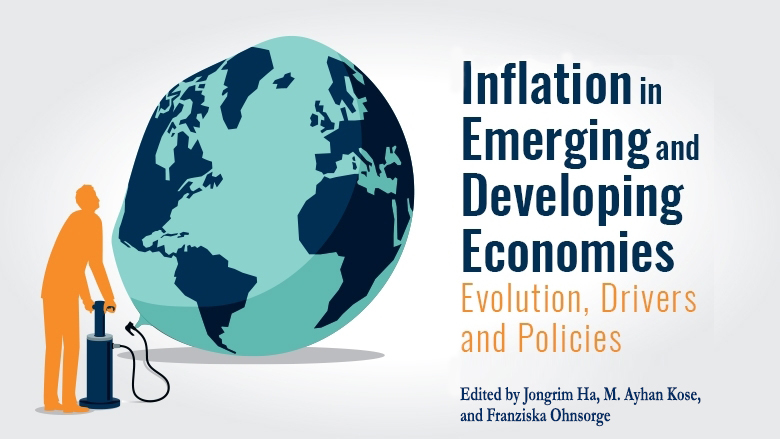Prospect Group Policy Research Working Papers -- Recent Issues
Archive (2004-) | View by Author
Geopolitical Risks and Trade (September 2025)
This paper studies the impact of geopolitical risks on international trade, using the Geopolitical Risk (GPR) index of Caldara and Iacoviello (2022) and an empirical gravity model. The impact of spikes in geopolitical risk on trade is negative, strong, and heterogeneous across sectors. The findings show that increases in geopolitical risk reduce trade by about 30 to 40 percent. These effects are equivalent to an increase of global tariffs of up to 14 percent. Services trade is most vulnerable to geopolitical risks, followed by agriculture, and the impact on manufacturing trade is moderate. These negative effects are partially mitigated by cultural and geographic proximity, as well as by the presence of trade agreements.
Fiscal Challenges in Small States: Weathering Storms, Rebuilding Resilience (September 2025)
The COVID-19 pandemic and the global shocks that followed have worsened fiscal and debt positions in small states, intensifying their already substantial fiscal challenges—especially the need to manage more frequent climate change–related natural disasters. Forty percent of the 35 emerging market and developing economies (EMDEs) that are small states are at high risk of debt distress or already in it, roughly twice the share for other EMDEs. Larger fiscal deficits since the pandemic reflect increased spending to support households and firms, and weaker revenues. To improve their fiscal sustainability and resilience to future shocks, small states need to strike a balance between maintaining adequate fiscal buffers and increasing investments in human capital and climate change–resilient infrastructure. Comprehensive fiscal reforms are essential. First, small states’ revenues, which are highly volatile and dependent on sometimes unreliable sources, should be drawn from a more stable and secure tax base. Second, spending efficiency needs to be improved, especially on transfers to public enterprises, subsidies, and the public wage bill. Third, these changes should be complemented by reforms to fiscal frameworks, including better utilization of fiscal rules and sovereign wealth funds. Finally, to help these countries stay on sustainable fiscal paths, well-coordinated and targeted global policies are also needed. Policies supported by the global community can help to improve fiscal policy management, provide technical assistance, address debt challenges, and bolster funding for small states to invest in climate change resilience and adaptation, and other priority areas.
Growth, Structural Transformation and Carbon Emissions (September 2025)
The environmental Kuznets curve postulates an inverted-U relationship between environmental degradation and economic growth. And economic growth has been synonymous with structural transformation. How do patterns of growth and structural transformation relate to carbon emissions? Based on data across almost 100 countries between 1960 and 2017, we find that the movement of workers into the manufacturing and services sectors is associated with a higher carbon emissions intensity of GDP. However, this positive association diminishes at higher shares of employment in both the manufacturing sector and modern, knowledge-intensive services. The diminishing positive association between emissions intensity and structural transformation towards these sectors is more discernible for developing economies compared with advanced economies. Further, based on sector-specific carbon emissions across 66 countries between 1995 and 2018, we find evidence of convergence in the carbon emissions intensity of production across countries in all sectors, with the potential for further reductions in developing economies, especially given relatively high indirect carbon emissions through inter-sectoral linkages.
Fragile and Conflict-Affected Situations: Intertwined Crises, Multiple Vulnerabilities (September 2025)
Home to more than 1 billion people, the 39 emerging market and developing economies (EMDEs) classified as being in fragile and conflict-affected situations (FCS) are plagued by instability and weak institutions. This hinders their ability to attain the robust, sustained economic growth needed for development. These economies exhibit lower per capita incomes, slower economic growth, and greater volatility than other developing countries. Conflicts impose a high human and economic toll on many economies classified as FCS. High-intensity conflicts are associated with a cumulative loss in per capita GDP of about 20 percent five years after their onset, relative to pre-conflict projections. FCS economies experienced far deeper contractions than other EMDEs during the COVID-19 pandemic, and their recovery has been much weaker. About 70 percent of FCS economies are either at high risk of or already in debt distress—up from around 40 percent a decade ago. Employment growth continues to lag population growth. Tailored policies, reforms, and sustained global support are needed to expand opportunities for economic growth and job creation in FCS economies. Case studies from a diverse group of economies that were formerly afflicted by conflict in Africa, Asia, and Europe provide policy insights.
From Tailwinds to Headwinds: Emerging and Developing Economies in the Twenty-First Century (July 2025)
The first quarter of the twenty-first century has been transformative for emerging market and developing economies (EMDEs). These economies now account for about 45 percent of global GDP, up from about 25 percent in 2000, a trend driven by robust collective growth in the three largest EMDEs—China, India, and Brazil (the EM3). Collectively, EMDEs have contributed about 60 percent of annual global growth since 2000, on average, double the share during the 1990s. Their ascendance was powered by swift global trade and financial integration, especially during the first decade of the century. Interdependence among these economies has also increased markedly. Today, nearly half of goods exports from EMDEs go to other EMDEs, compared to one-quarter in 2000. As cross-border linkages have strengthened, business cycles among EMDEs and between EMDEs and advanced economies have become more synchronized, and a distinct EMDE business cycle has emerged. Cross-border business cycle spillovers from the EM3 to other EMDEs are sizable, at about half of the magnitude of spillovers from the largest advanced economies (the United States, the euro area, and Japan). Yet EMDEs confront a host of headwinds at the turn of the second quarter of the century. Progress implementing structural reforms in many of these economies has stalled. Globally, protectionist measures and geopolitical fragmentation have risen sharply. High debt burdens, demographic shifts, and the rising costs of climate change weigh on economic prospects. A successful policy approach to accelerate growth and development should focus on boosting investment and productivity, navigating a difficult external environment, and enhancing macroeconomic stability.
The Asymmetric Bank Distress Amplifier of Recessions (July 2025)
One defining feature of financial crises, evident in U.S. and international data, is asymmetric bank distress—concentrated losses on a subset of banks. This paper proposes a model in which shocks to borrowers’ productivity dispersion lead to asymmetric bank losses. The framework exhibits a “bank distress amplifier,” exacerbating economic downturns by causing costly bank failures and raising uncertainty about the solvency of banks, thereby pushing banks to deleverage. Quantitative analysis shows that the bank distress amplifier doubles investment decline and increases the spread by 2.5 times during the Great Recession compared to a standard financial accelerator model. The mechanism helps explain how a seemingly small shock can sometimes trigger a large crisis.
Tradeoffs over Rate Cycle : Activity, Inflation and the Price Level (May 2025)
Central banks often face tradeoffs in how their monetary policy decisions impact economic activity (including employment), inflation and the price level. This paper assesses how these tradeoffs have evolved over time and varied across countries, with a focus on understanding the post-pandemic adjustment. To make these comparisons, we compile a cross-country, historical database of “rate cycles” (i.e., easing and tightening phases for monetary policy) for 24 advanced economies from 1970 through 2024. This allows us to quantify the characteristics of interest rate adjustments and corresponding macroeconomic outcomes and tradeoffs. We also calculate Sacrifice Ratios (output losses per inflation reduction) and document a historically low “sacrifice” during the post-pandemic tightening. This popular measure, however, ignores adjustments in the price level—which increased by more after the pandemic than over the past four decades. A series of regressions and simulations suggest monetary policy (and particularly the timing and aggressiveness of rate hikes) play a meaningful role in explaining these tradeoffs and how adjustments occur during tightening phases. Central bank credibility is the one measure we assess that corresponds to only positive outcomes and no difficult tradeoffs.
Buffering Recessions: Labor Market Asymmetries and the Role of Self-Employment (March 2025)
The employment structure in emerging markets and developing economies (EMDEs) differs markedly from that in advanced economies, which has implications for adjustment to cyclical conditions. This paper examines the cyclicality of employment in advanced economies and EMDEs. Although EMDEs exhibit a more violent GDP cycle than advanced economies, advanced economies present a steeper and more violent employment cycle. In the short term, an employment composition that is more biased toward self-employment, which is less cyclical, explains about 70 percent of these differences, while in the medium-term it accounts for about 40 percent. These characteristics explain why, during recessions, employment in advanced economies is more sensitive to economic fluctuations than in EMDEs.
Several factors contribute to the limited use of improved seed varieties in Ethiopia. Among those, on the supply side, is the restricted availability of seeds in the volume, quality, and timeliness required by farmers, partly due to inadequate public and private investment in the sector. Beginning in 2011, the Government of Ethiopia introduced a novel experiment—the direct seed marketing approach—to reduce some of the centralized, state-run attributes of the country’s seed market and rationalize the use of public resources. Direct seed marketing was designed to incentivize private and public seed producers to sell directly to farmers rather than through the state apparatus. This study is the first quantitative evaluation of the impact of direct seed marketing on indicators of a healthy seed system: access to quality seeds and farm-level productivity. Using a quasi-experimental difference-in-differences approach suitable to handling variation in treatment timing, the study finds that direct seed marketing led to an increase of 15 percentage points in the proportion of farmers purchasing maize seed, an increase of 45 percent in the quantity of maize seed purchased per hectare, and an increase of 18 percent in maize yield. However, there are differences across crops, with the effects of direct seed marketing on wheat seed purchases and yields being statistically insignificant. These crop-specific differences in performance are likely explained by differences in the reproductive biology of maize (particularly maize hybrids) and wheat, which tend to incentivize commercial activity in hybrid maize seed markets more than in self-pollinating wheat or open-pollinated maize markets. These differences suggest a need for nuanced policy responses, institutional arrangements, and market development strategies to accelerate the adoption of improved varieties.
Dynamic Effects of Fiscal Rules: Do Initial Conditions Matter? (February 2025)
Fiscal rules have been shown to support fiscal discipline by improving government budget balances and restraining the growth of debt. However, questions remain about what enhances their effectiveness and how certain conditions help to build the credibility needed for their survival and success. Using data from 108 countries between 1984 and 2012, this paper studies the dynamic effects of fiscal rule adoption. It shows that although fiscal rules generally improve the primary balance, their effects depend on the time horizon under consideration and the context of adoption. In advanced economies and countries with strong political institutions, the effects strengthen over time. Conversely, in emerging markets and developing economies—especially those with weaker institutions—their impact tends to fade as time passes. The findings highlight the critical role of economic conditions and consensus building at the time of adoption. Specifically, fiscal rules introduced in times of economic hardship or under highly concentrated political power are often less effective in the medium term.
Over the past few decades, fiscal policy has been about 30 percent more procyclical and about 40 percent more volatile in commodity-exporting emerging markets and developing economies (EMDEs) than in other EMDEs. Both procyclicality and volatility of fiscal policy—which share some underlying drivers—hurt economic growth because they amplify business cycles. Structural policies, including exchange rate flexibility and the easing of restrictions on international financial transactions, can help reduce both fiscal procyclicality and fiscal volatility. By adopting average advanced economy policies on exchange rate regimes, restrictions on cross-border financial flows, and the use of fiscal rules, commodity-exporting EMDEs can increase their gross domestic product per capita growth by about 1 percentage point every four to five years through the reduction in fiscal policy volatility. Such policies should be supported by sustainable, well-designed, and stability-oriented fiscal institutions that can help build buffers during commodity price booms to prepare for any subsequent slump in prices. A strong commitment to fiscal discipline is critical for these institutions to be effective in achieving their objectives.
Is the U.S. Friend-Shoring, Nearshoring, or Reshoring? Evidence from Greenfield Investment Announcements (December 2024)
This paper examines the evolution of greenfield investment announcements—both domestic and international—for US multinational companies in response to recent global shocks. The results indicate an intensification of reshoring and nearshoring activities by US companies, especially following the Russian Federation’s invasion of Ukraine. This shift is estimated to have doubled the number of direct jobs associated with greenfield investment announcements in the US and its neighboring countries. The paper finds no evidence that US companies are adopting a friend-shoring strategy by investing more in military allies. The paper suggests that US supply chains are likely to become less global and more regional as these investments become operational.
Yield Growth Patterns of Food Commodities: Insights and Challenges (December 2024)
Understanding global food production and productivity patterns is crucial for policy and in-vestment decisions aimed at addressing poverty, food insecurity, and climate change. This pa-per develops comprehensive calorific-based production and yield indexes for 144 crops, cover-ing 98 percent of global agricultural land and food output. These indexes provide standardized measures across various crops and varieties, facilitating comparison of agricultural productivity and consolidating country and regional contributions to global food production. Utilizing a Box-Cox transformation, the analysis finds that a linear model best approximates yield growth. The findings reveal that, at an aggregate level, there has been no discernable slowdown in global yield growth over the past six decades. This translates into an average annual yield increase equivalent to nearly 33 kilograms of wheat per hectare. These results suggest that any observed deceleration in specific commodities, regions, or countries has been offset by gains in others. While these findings are reassuring from a global food supply perspective, caution is warranted about the sustainability of production and the affordability of food. These concerns are particu-larly relevant as global food demand increases due to population and income growth, and as the pressures from climate change intensify. The study underscores the importance of adopting strategic and sustainable agricultural practices to ensure continued food security in the face of evolving global challenges.
Resolving Puzzles of Monetary Policy Transmission in Emerging Markets (November 2024)
Conventional empirical models of monetary policy transmission in emerging market economies produce puzzling results: monetary tightening often leads to an increase in prices (the price puzzle) and depreciation of the currency (the foreign exchange puzzle). This paper shows that incorporating forward-looking expectations into standard open economy structural vector autoregressive models resolves these puzzles. Specifically, the models are augmented with novel survey-based measures of expectations based on consumer, business, and professional forecasts. The findings show that the rise in prices following monetary tightening is related to currency depreciation, so eliminating the foreign exchange puzzle helps solve the price puzzle.
Identifying Growth Accelerations (October 2024)
This paper introduces a new method to identify output growth accelerations that integrates elements of both the “criteria-based” and “break-testing” approaches, which are prevalent in the literature. The proposed criteria do not impose a fixed length on growth accelerations, thus enabling duration analyses without relying on questionable statistical techniques for the identification of these accelerations. The findings show that growth accelerations last an average 13.4 years, albeit with significant variations in duration across regions. Initial conditions and contemporaneous domestic and external economic conditions all matter for the continuation of an acceleration, and changes in any single policy condition have less of an impact.
Digitalization and Inclusive Growth : A Review of the Evidence (October 2024)
This paper summarizes the evidence on the growth and distributional effects of digitalization through four channels: average productivity growth, employment and wages, access to markets, and government finances. First, digitalization has increased average productivity growth by better matching demand and supply, improving the efficiency of business processes, and boosting the accumulation of intangible capital. For developing economies, the productivity gains from “smart” automation and artificial intelligence that reduce labor costs may be lower than from the previous wave of information and communications technologies, which improved the matching of sellers to buyers by reducing search and coordination costs. Second, there is little evidence that use of information and communications technologies has reduced aggregate employment or resulted in job polarization in developing economies, unlike the experience of advanced economies. However, distributional challenges within countries might increase to the extent that “smart” robots and artificial intelligence need complementary skills. Third, digitalization has enhanced market access for rural households, small firms, and unbanked populations in developing economies through improving information flows. Fourth, digitalization has improved the efficiency of government spending on, and revenue mobilization for, public services and welfare programs through its effect on transparency, accountability, simplification of bureaucratic processes, and adoption of new delivery models.
Fiscal Challenges in Small States: Weathering Storms, Rebuilding Resilience (September 2024)
The COVID-19 pandemic and the global shocks that followed have worsened fiscal and debt positions in small states, intensifying their already substantial fiscal challenges—especially the need to manage more frequent climate change–related natural disasters. Forty percent of the 35 emerging market and developing economies (EMDEs) that are small states are at high risk of debt distress or already in it, roughly twice the share for other EMDEs. Larger fiscal deficits since the pandemic reflect increased spending to support households and firms, and weaker revenues. To improve their fiscal sustainability and resilience to future shocks, small states need to strike a balance between maintaining adequate fiscal buffers and increasing investments in human capital and climate change–resilient infrastructure. Comprehensive fiscal reforms are essential. First, small states’ revenues, which are highly volatile and dependent on sometimes unreliable sources, should be drawn from a more stable and secure tax base. Second, spending efficiency needs to be improved, especially on transfers to public enterprises, subsidies, and the public wage bill. Third, these changes should be complemented by reforms to fiscal frameworks, including better utilization of fiscal rules and sovereign wealth funds. Finally, to help these countries stay on sustainable fiscal paths, well-coordinated and targeted global policies are also needed. Policies supported by the global community can help to improve fiscal policy management, provide technical assistance, address debt challenges, and bolster funding for small states to invest in climate change resilience and adaptation, and other priority areas.
Rate Cycles (August 2024)
This paper analyzes cycles in policy interest rates in 24 advanced economies over 1970–2024, combining a new application of business cycle methodology with rich time-series decompositions of the shocks driving rate movements. “Rate cycles” have gradually evolved over time, with less frequent cyclical turning points, more moderate tightening phases, and a larger role for global shocks. Against this backdrop, the 2020–24 rate cycle has been unprecedented in many dimensions: it features the fastest pivot from active easing to a tightening phase, followed by the most globally synchronized tightening, and an unusually long period of holding rates constant. It also exhibits the largest role for global shocks—with global demand shocks still dominant, but an increased role for global supply shocks in explaining interest rate movements. Inflation and the growth in output and employment have, on average, largely returned to historical norms for this stage in a tightening phase. Any recalibration of interest rates going forward should be gradual, however, and account for the interactions between increasingly important global factors and domestic circumstances, combined with uncertainty as to whether rate cycles have reverted to pre-2008 patterns.
Last Updated: Oct 23, 2025

